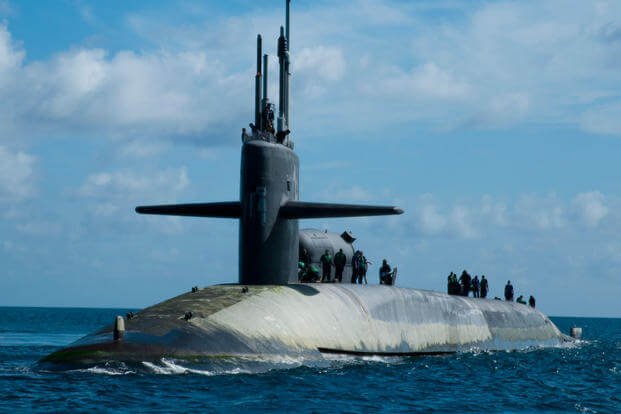Lawmakers raised concerns with top Pentagon leaders today over the costly program to modernize the U.S. nuclear arsenal.
Members of the House Armed Services Committee questioned leaders from the Air Force and Navy about the proposed overhaul of what is known as America's nuclear triad -- a three-pronged system consisting of strategic bombers, intercontinental ballistic missiles and submarine-launched ballistic missiles.
The endeavor -- which is scheduled to cost billions over the next two decades -- has many lawmakers looking for ways to reduce costs at a time when all the services are struggling with maintain the readiness and modernization of their conventional forces.
"We are going to spend $3.3 billion on every single one of the nuclear weapons," Rep. John Garamendi, D-California, said at the March 16 hearing.
"The question that we need to ask ourselves is are we prepared to send all of you on a mission of spending close to a trillion dollars over the next 25 years on revamping and rebuilding our entire nuclear arsenal and delivery systems?
"The question is what are the really important things that we need to do? Do we really need to replace the Minuteman IIIs with Minuteman IVs in the next 20-25 years? Do we really need to have a new, long-range cruise missile? Or can we delay that? And instead spend the money on wrapping up" the Army's current problem of sacrificing modernization for near-term readiness.
Army Chief of Staff Gen. Mark Milley spoke up first.
"I just want to be clear, I don't have a part of the triad, but I can tell you that in my view ... that nuclear triad has kept the peace since nuclear weapons were introduced and has sustained the test of time," Milley said. "That is not unimportant and the system is deteriorating, Congressman, and it needs to be revamped. It needs to be overhauled."
Garamendi responded by saying, "We are not debating on whether it needs to be revamped. The question is how much and when?"
Rep. Trent Franks, R-Arizona, asked if the Obama administration has "conducted analysis of eliminating one or more legs of the triad or significantly altering the U.S. nuclear posture."
"Congressman, I'm not aware of any detailed look at that," said Navy Secretary Ray Mabus. "We have been obviously focused on our leg of the triad -- the Ohio-class replacement."
The Navy has done a detailed analysis on a program to replace the Ohio-class ballistic missile submarines and the program is on track to begin in 2021, Mabus said.
The nuclear deterrence mission is a "matter of our national existence and from a Navy standpoint, it's our top modernization program," Mabus said.
"You are going to have to look at this program in a national lens because if you drop this in the middle of a Navy shipbuilding budget, it will gut Navy shipbuilding for decades to come. And so the reason we are focused on how to do it, is to do it without damaging our conventional superiority as well."
Franks asked Air Force Secretary Deborah James for her view on the importance of the triad.
"I absolutely support it, and I believe that the administration supports it precisely because it has worked for us for decades," James said. "It has provided that deterrent, and each leg of the triad is a little bit different aspect of that. The ICBMs are considered responsive, the sea-launched are considered survivable and the bombers, of course, are flexible."
Rep. Robert Wittman, R-Virginia, asked the Navy about the possibility of funding the Ohio-class replacement with the National Sea-Based Deterrence Fund.
"If we take the cost of that boat and we put that in the middle of a shipbuilding budget, we know what happens; it doesn't take a rocket scientist to figure that out," Wittman said. "What I believe we need to be looking at is what do we do to mitigate that?
"What kind of cost savings would we be able to accrue by funding Ohio-class replacement with the National Sea-Based Deterrence Fund? There is still some resistance here. I think that is the way to do it, and it doesn't interfere with any long-term viability of any other ship-building program."
Adm. John Richardson, chief of naval operations, said that "significant savings are achievable by the use of a fund like that."
"With the authorities that the fund may provide, it would allow you to make very wise business decisions," Richardson said. "The projection is you could save more than 10 percent over the cost of the program, which is essentially getting one submarine for free."
James said she was not familiar with the NSBDF, but said "if it would help and benefit one leg of the triad, I would ask that all the legs of the triad be included in such an approach."
-- Matthew Cox can be reached at matthew.cox@military.com.
Related Video:






























